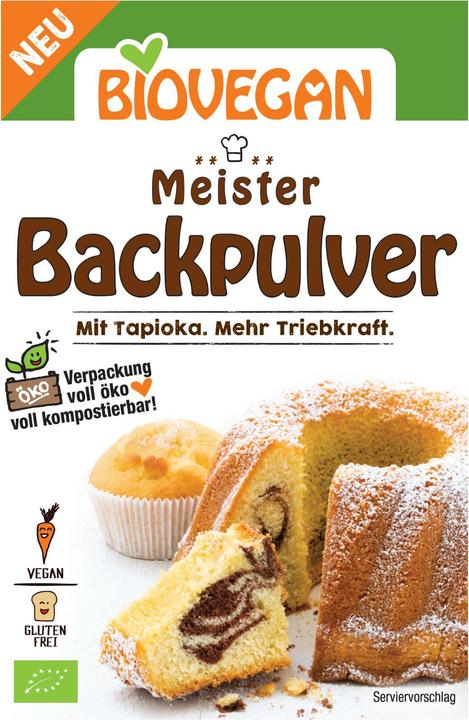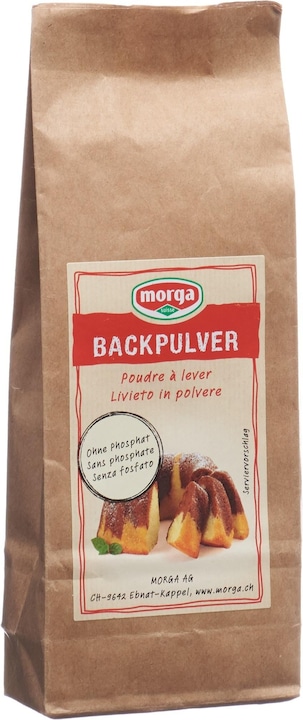
Dr. Oetker Dry yeast
21 g
So you want to bake bread but have run out of fresh yeast? We tried using baking powder, baking soda and dry yeast instead and this is what happened.
Bread’s made with yeast. End of story. But what about that recipe you found online for a «quick and tasty 15-minute baking powder loaf»? You know, the one that swears the bread pictured tastes amazing. It’s a bold statement our expert duo Balissat-Streusel weren’t going to leave unchallenged. Find out what happened in the video. For English subtitles, click the gear icon, «Subtitles/CC» and «Auto-translate». We’ve also listed in-depth information on how and why certain raising agents work (and why they don’t) below.
Yeast is a fungus found in many places in nature – for example on ripe fruit, in flower nectar or in the air. In theory, you could even grow a sourdough from this «wild» stuff. After all, sourdough also contains yeast. But to make industrially produced baker’s yeast, only the strongest and tastiest yeast fungi contained in natural yeast is extracted and cultivated. For yeast to make bread rolls fluffy, the dough needs to proof in temperatures between 23 and 27 degrees Celsius. This roughly corresponds to room temperature. A large part of the airy bread texture starts to form before it’s baked, as the yeast bacteria eat sugar and turn it into gas. What’s good about that? Bread becomes easier to digest thanks to the longer fermentation process. Don’t believe me? Then try this loaf that’s fermented overnight (recipe in German).
As the name suggests, dry yeast is, well, yeast that’s been dried. That’s why it acts the same way as fresh yeast. It’s handy because it doesn’t need to be refrigerated and has a longer shelf life.
If you’re using a bread recipe that requires fresh yeast, apply the following formula to substitute it with dry yeast: 1 g of dry yeast for 3 g of fresh yeast. This rule applies even if the packaging does say: «This sachet is enough for 500 g of flour.» Sure, the stated amount will produce a loaf of bread. However, the amount of yeast required doesn’t depend on the amount of flour, but mainly on how long the dough gets to rest, the room temperature and the consistency of the dough.

Dr. Oetker Dry yeast
21 g
Baking powder consists of three ingredients: sodium hydrogen carbonate, starch and acid. For the baking powder to activate and make your dough airy, it also needs the moisture and heat generated during the baking process. So when you add the baking powder to the dough, you’re adding the first component – moisture. Next, when you pop the dough in the oven, the second component kicks in – heat. Only then is there a chemical reaction involving the release of carbon dioxide. This makes the dough rise and fluff up. In theory, this should also work with bread, right? Well, yes and no. Bread dough is heavy, doesn’t contain enough moisture and forms a crust too quickly when it’s in the oven. All this means baking powder can never have the same effect as yeast.


Dr. Oetker Baking Powder Backin 10Er
160 g

Baking soda’s pure sodium hydrogen carbonate and one of the three components of baking powder. For baking soda to release carbon dioxide, it not only needs moisture and heat, but also acid – lemon juice, for example. So if you’re using baking soda in a recipe that requires yeast, chances are your bread won’t turn out great, as there’s no acidity. The white powder also adds a lye-like taste to your baked goods. Sounds better than it tastes.
If that half-cube of yeast that’s been sitting in your fridge since the beginning of time isn’t looking so fresh any more and you’ve run out of dry yeast, don’t start experimenting. For the best home-baked bread rolls (link in German) you’ve ever eaten, either go out and buy some fresh yeast or put your feet up and postpone your baking project until you’ve done your next food shop.
Baking book author, food blogger and content creator by day. Other people's cat lover, peanut butter junkie and houseplant hospice nurse by night.
Interesting facts about products, behind-the-scenes looks at manufacturers and deep-dives on interesting people.
Show all